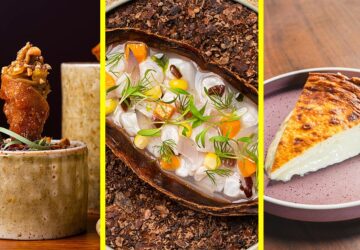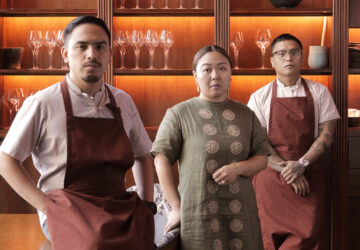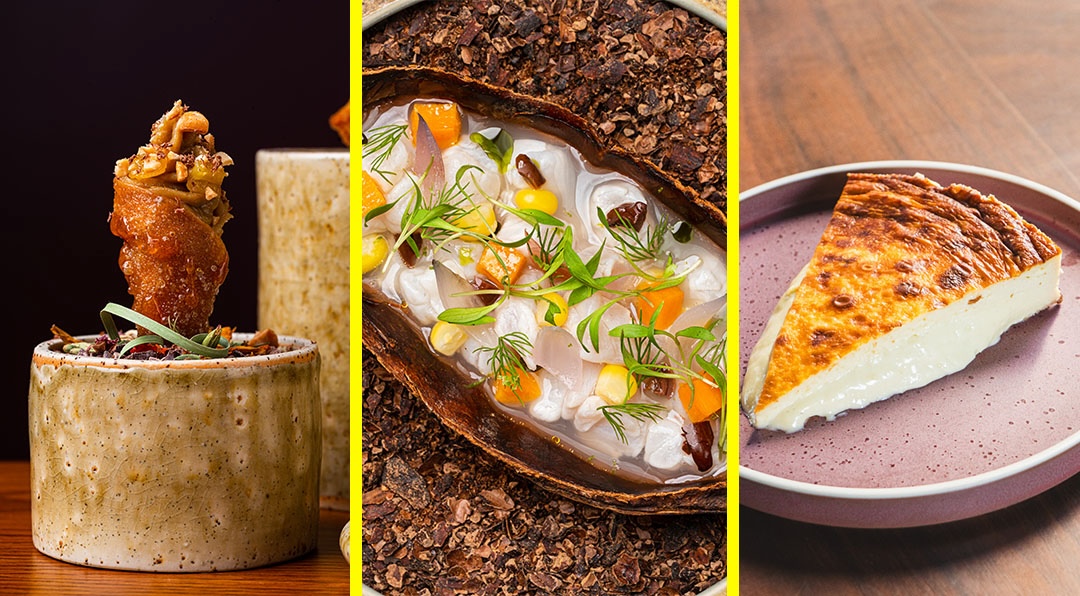People have favorites. It’s simply human nature. There’s comfort in returning to your favorite restaurant, having your favorite dish, and indulging in the assurance that you’ll always be able to have it again (and again and again in many cases). That’s exactly why introducing a new menu can be nerve-racking.
But these establishments don’t let that fear stop them.
While favorites reign supreme for most people, there’s a strong community that values the thrill of the new even more. What these diners look for are dishes that push the envelope and test the limits of edible creativity.
Hapag, Bolero, Gallery by Chele, +36 at The Lind in Boracay, Omotesando Koffee, and Ascott are doing just that.
These restaurants have recently released new or limited time menus that cater to the adventurous diner with a penchant for discovery. From a hearty lunch, an exciting dinner, and even afternoon tea, they use food as a gateway to unearthing new experiences and delights.—Andrei Yuvallos
Hapag’s grand comeback and Ayà’s anticipated debut

Hapag’s rise to fame started in Katipunan. They’ve since started fresh at a bigger, better, and brighter space on the seventh floor of Rockwell’s Balmori Suites. It’s a grand, tastefully appointed space, decorated with distinctly Filipino touches that looks over Makati.
With the new space comes a new menu that shows the restaurant’s growth and ambition. Kevin Navoa, Thirdy Dolatre, and Erin Ganuelas have retained the same whimsy and commitment to modern Filipino but with an elevated overall experience. They have also done a good job of introducing more regional ingredients like pitik (slipper lobster) in their inasal and tambis (watery rose apple) in the dessert course of their degustation menu.
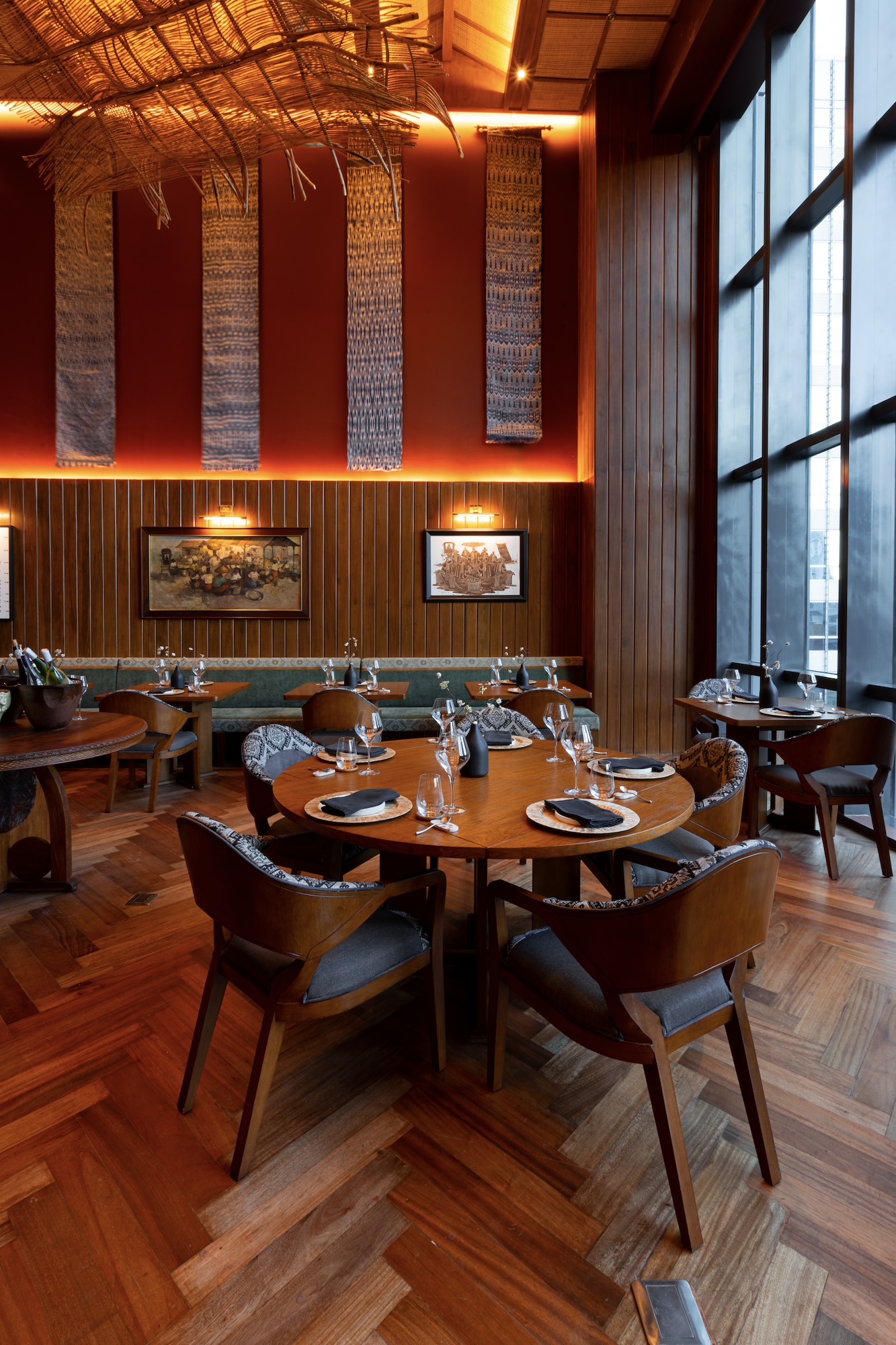

Aside from the return of Hapag, they’ve also introduced a more casual concept in the form of Ayà. The bar is on the restaurant’s mezzanine floor that offers an equally stunning view of Makati.
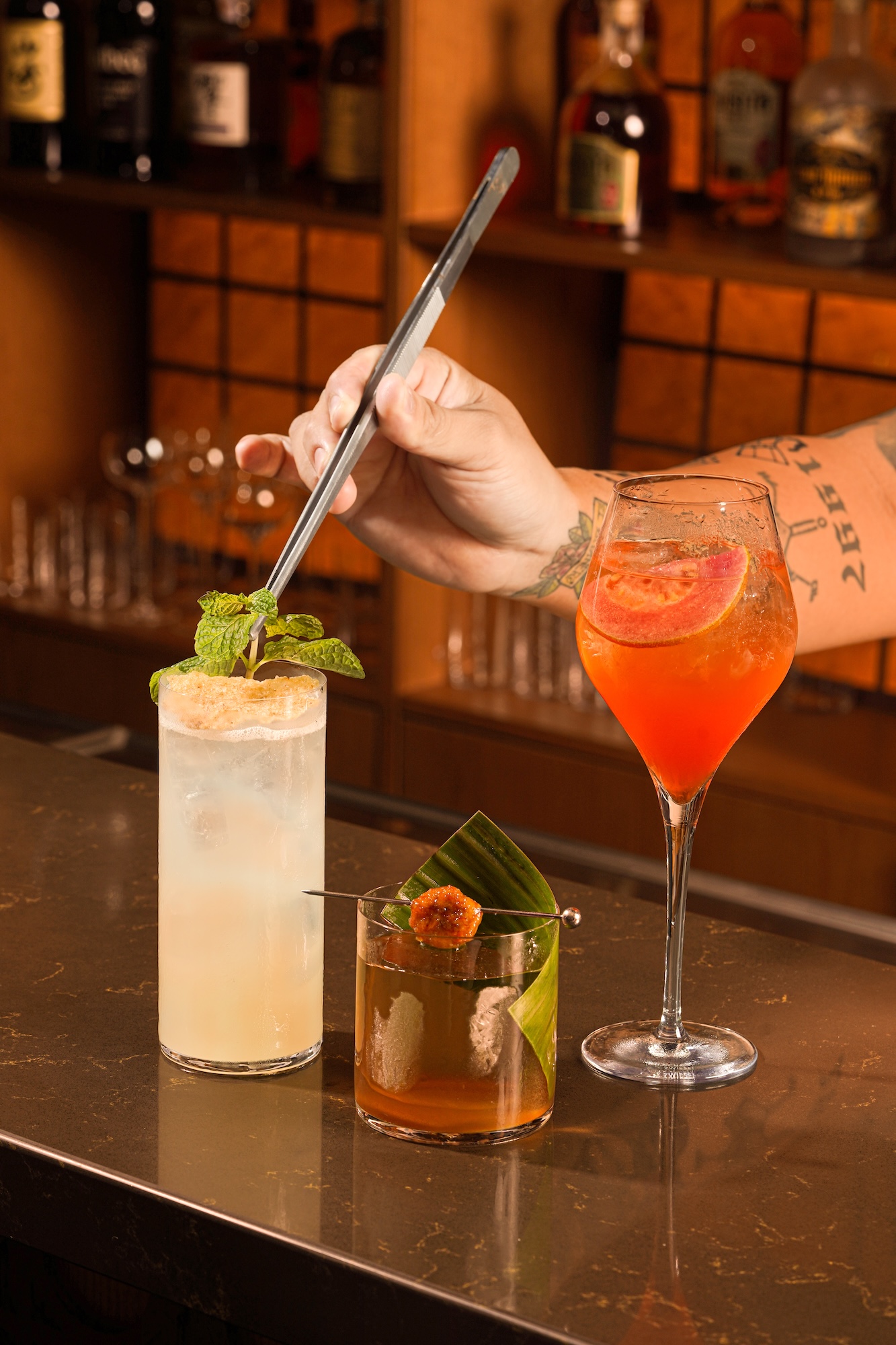
It’s a more relaxed concept that focuses on small bites, craft cocktails, and local craft beers while still embodying the spirit of Hapag. Some of the items you shouldn’t miss on the menu are the sinuglaw (a double header dish that features grilled pork belly and fresh kinilaw) warek-warek (an Ilocano delicacy similar to dinakdakan), and their Choc Nut dessert for the added nostalgia factor.—Andrei Yuvallos.
Delicious—and ingenious—fusion keeps Bolero’s fire burning

Bolero may have opened recently, but the modern European restaurant isn’t one to rest on their laurels. The restaurant made a splash last year by introducing their award-winning Spanish cheesecake that romanced everyone who’s tried it.
The new dishes the restaurant has introduced does well to keep that signature Bolero fire going. The coal-roasted umami cabbage and creamy sweet and sour tomatoes are edible testaments to the fusion of flavors and techniques the restaurant has become known for.

Both dishes take ingredients from Asian cuisine and infuse them with traditionally European methods and presentations for a stellar kick-off to any meal.
For the mains, one would be remiss to skip the duck with meatballs and satay jus. The perfectly grilled duck remains tender on the inside with a proudly crisp exterior. For added texture and flavor, the dish is served with a meatball made with shrimp and pork. A glossy satay jus finishes the dish and adds a savory-smoky kick.
Time and time again, Bolero proves its genuine commitment to serving delicious food. The new dishes are only the latest chapter in what we’re hoping to be a longtime love affair.—Andrei Yuvallos
Gallery by Chele takes us on a great cacao adventure
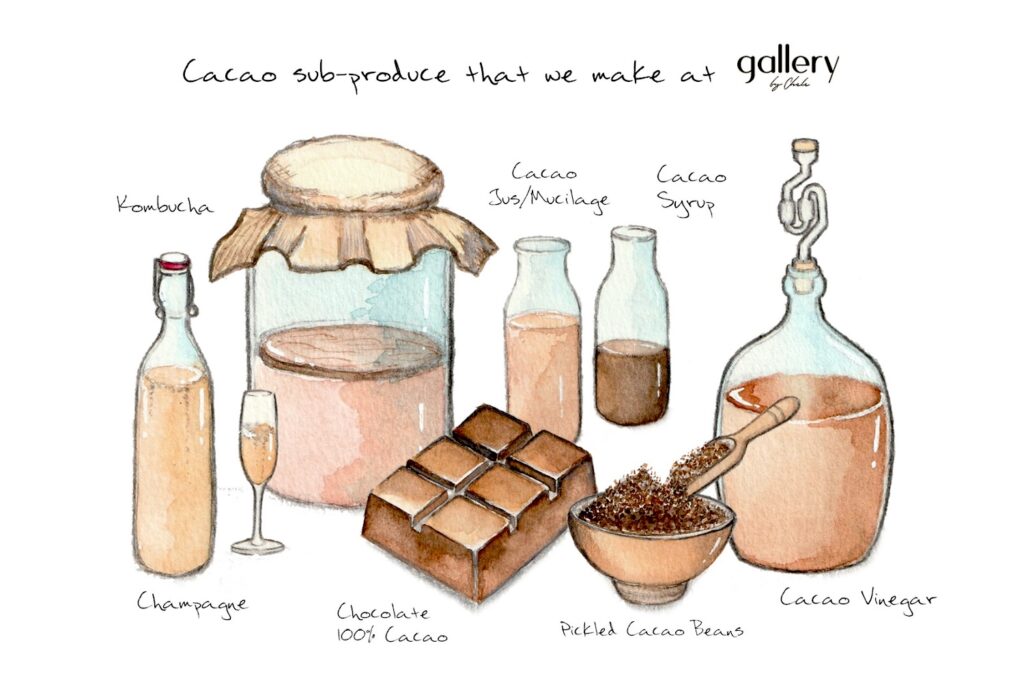
Gallery by Chele has become a venerable institution for those who indulge in experimental culinary delights. Their new degustation offering only serves as a delicious reminder. Cacao is the focal point of the new menu. Not just the roasted nibs, mind you, but the whole fruit.
From pit to pulp, every part of the cacao is utilized in the impressive menu. The multi-sensory experience brings together signature Gallery by Chele dishes and introduces plates that encourage an exploration of the world of cacao.
In true Gallery by Chele fashion, the meal starts with a series of bites that take you around the restaurant. But the journey truly begins with the cacao vinegar tasting that comes with the cacao ceviche, which is of course, served in a hollowed-out cacao fruit.
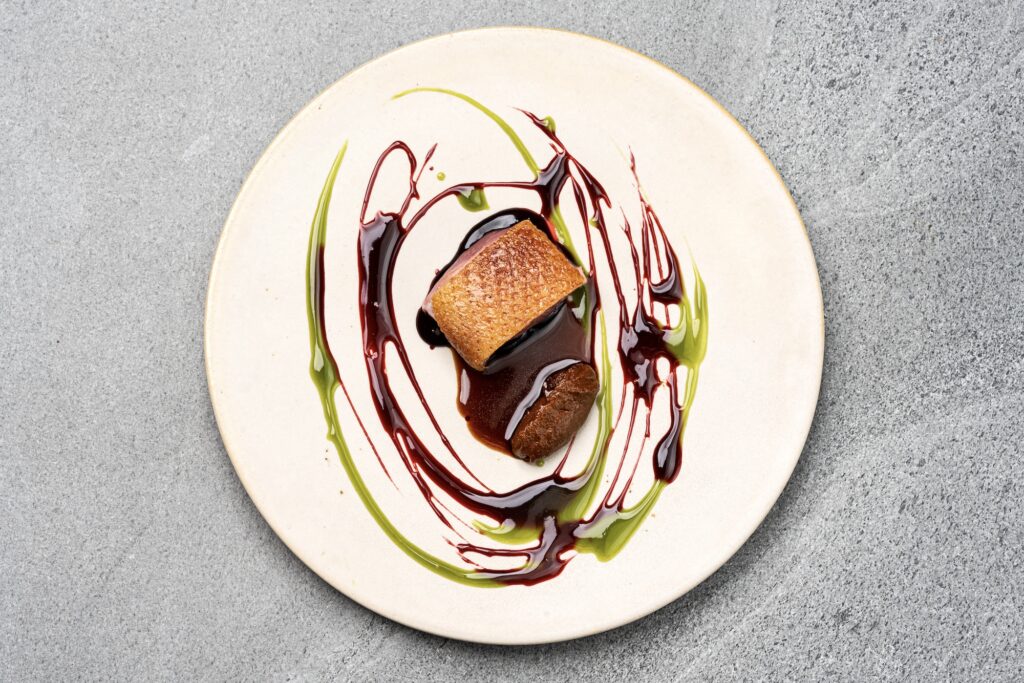
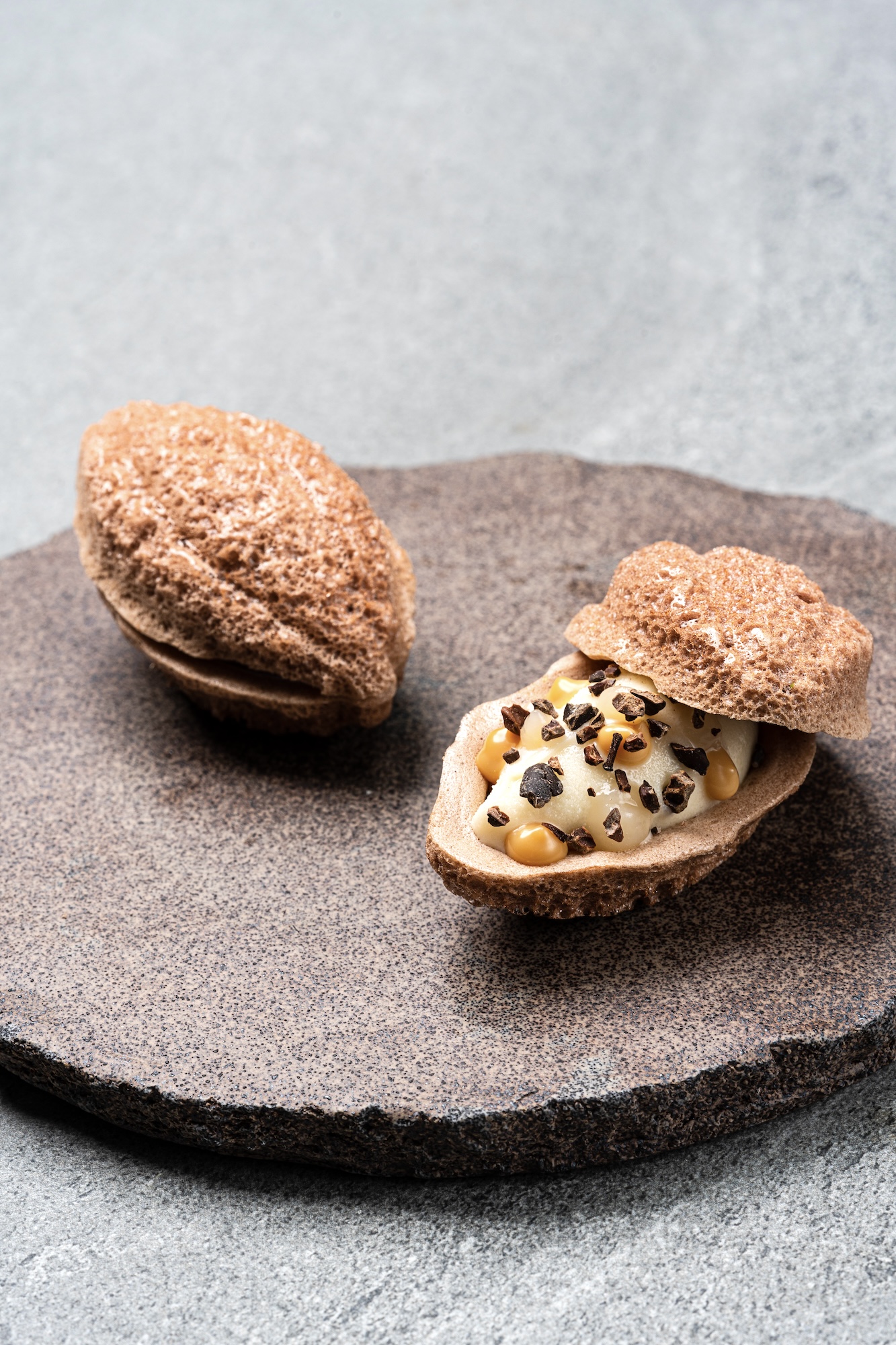
For its savory applications, the duck cacao with beetroot, mole, and duck fried rice is a dish that does not fail to impress. Mole is the main cacao component of the dish, which tempers the richness of the duck with its darker, tart flavor.
Leaving room for dessert is paramount in this journey. The mucilage dessert is a revelation, showing just how versatile cacao can be—even in dessert form. Light and crisp meringue is molded into the shape of the cacao fruit and filled with a tart and light sorbet infused with champagne and cacao juice.
Gallery by Chele has become a venerable institution for those who indulge in experimental culinary delights. Their new degustation offering only serves as a delicious reminder.
At the end of the journey, we’re presented with the whole picture in dessert form—a dessert simply titled “Chocolate.” The dish of light chocolate mousse, cacao nibs, and cardamom represents all the facets of cacao. Sweet, tart, bright, rich, and endlessly delightful. It’s the whole fruit, deconstructed and reconstructed, in the spirit of culinary adventure.
The experience comes in either a 6- or 10-course meal, but you should come hungry either way.—Andrei Yuvallos
+36 at The Lind makes the case for tea time at the beach
One wouldn’t immediately associate afternoon tea (a distinctly British affair) with the paradise that is Boracay, but chefs Iain Murray and Johnny Struijk are masters of culinary persuasion. While +36 had offered afternoon tea in the past, its latest iteration offers delicacies you won’t usually find on the island.
There’s novelty (and lots of joy) to be found in enjoying an impressively faithful serving of scones, jam, and clotted cream near the water. Fresh fruit tarts bursting with island flavor, leggy macarons, and savory finger sandwiches do well to round out the experience.
For the sandwiches, their version of the traditional smoked salmon with dill and the hearty roast beef were two of the collective favorites. Tea time by the beach may not be a widespread practice, but the team at +36 are definitely on to something.
Finally, a hearty beef curry to pair with your Omotesando Koffee order
Following the opening of its second outpost in Salcedo Village, Makati last year, the minimalist coffee shop from Japan has recently introduced a new item on the menu: beef curry rice.
Omotesando Koffee previously only served tamago and shrimp sando alongside their cubed kashi dessert to go with its selection of coffee, matcha, and other beverages.
Perfect for the neighborhood’s corporate lunch crowd, who may not want to venture out too far for productivity’s sake, the dish is surprisingly straightforward. Its mild-spiced and subtly sweet sauce is made with Japan-sourced curry roux and covers bite-sized chunks of beef. It’s paired with a shallot oil-flavored rice and served with a side of pickled cucumber, whose tanginess may just be the perfect addition to make every spoonful of the curry taste better.
Omotesando Koffee will also be introducing a new summery drink with a Japanese twist soon.—Christian San Jose
In search of history and a palatable experience at Ascott

Sometimes, it’s easy to take Filipino cuisine for granted because it’s always there anytime you want to consume it. And yet in the grand scheme of things, it’s also easy to be awed by the richness of regional Filipino food.
Fortunately today, many brands have taken it upon themselves to celebrate it whenever possible—with the peak of the festivities happening every April, officially recognized as Filipino Food Month.
It’s an idea that upscale serviced residence brand Ascott followed through in their most recent staging of their signature arts soiree.
Dubbed “Palate & Palette: A Fusion of Taste and Art,” the one-night only event at the Ayala Museum dispatched guests on an immersive culinary journey across the Philippines with a menu curated by Philippine ambassador to the World Food Travel Association Clang Garcia in collaboration with Mesclun and Catalogue chef Kat Alcantara and Scott’s executive chef Prince Patiño.
“Our role as chefs is to promote, elevate, and showcase what we really have in the Philippines,” says Scott’s executive chef Prince Patiño, citing the asin tibuok they used in the stellar dessert where they sprinkled the Bohol salt on top of unsweetened rice cakes made more energetic with caramelized carabao’s milk.
As Garcia opened the affairs with a lively “tagay na” toast—a Filipino gesture of brotherhood and an invitation to friendship—the Palate & Palette dinner summed up the taste of the Philippines and the heritage of the Filipino people in a simple five-course menu (excluding the glorious kansi, warek-warek, biyaki, and bangus-kesong puti canapes) that defined the archipelago as more than just the land of adobo and lumpia.
“Our role as chefs is to promote, elevate, and showcase what we really have in the Philippines,” says Patiño, citing the asin tibuok they used in the stellar dessert where they sprinkled the Bohol salt on top of unsweetened rice cakes made more energetic with caramelized carabao’s milk.

“The first thing we did is I asked all my chefs in Ascott Makati, ‘Where are you from and what’s your dish?’” says Alcantara of their thought process in crafting the menu. From there, they designed an experience that speaks for every possible Filipino.
A flurry of various regional flavors dominated the menu to the point where culinary comparisons between these Filipino dishes and the ones normally served in restaurants today are inevitable.
All the dishes are calculated and complete in representing the regions. From the dark comforts of Sulu’s tiyulah itum and the hearty mountainous richness of chinitlug, bukal ye etag, and pinuneg to the silky experimentation of Laguna’s pansit buko (using gluten-free coconut strips as the noodle base for the itik and ulang), the special menu felt big enough in its restraint and respect for local ingredients.
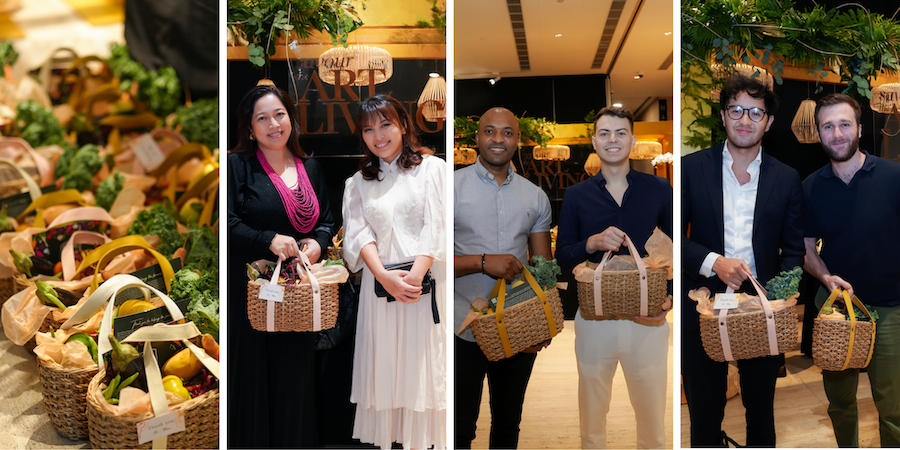
“A lot of the dishes like pansit buko for example, that’s a simple dish in the province; it’s not usually served in elegant settings,” says Alcantara. “And it was nice for everybody to discover and get excited about the ‘not known’ dishes of the Philippines.”
“We always think of mixing something Filipino with something foreign but we don’t think of mixing regional Filipino [dishes and ingredients] or the technique of one and the ingredient of another,” Mesclun chef Kat Alcantara says.
She also pointed out something to think about as we ended the night on a high with a range of beverages that reference the Battle of Mactan (made with lambanog and mango juice) and the Basi Revolt of 1807 (comprising ginger-infused basi, bignay wine, and ampalaya syrup).
“We always think of mixing something Filipino with something foreign but we don’t think of mixing regional Filipino [dishes and ingredients] or the technique of one and the ingredient of another,” she says. “Like seaweed from Mindanao or [using a] vinegar from Ilocos for the vinaigrette.”
And to Alcantara’s words of culinary wisdom, we toast to that.—Eric Nicole Salta
The tiyulah itum; chinitlug, bukal ye etag, and pinuneg; and ibos, dulce de leche, and asin tibuok will be part of the Scott’s menu for May while the pancit buko will be available at Mesclun in Ascott Makati.
